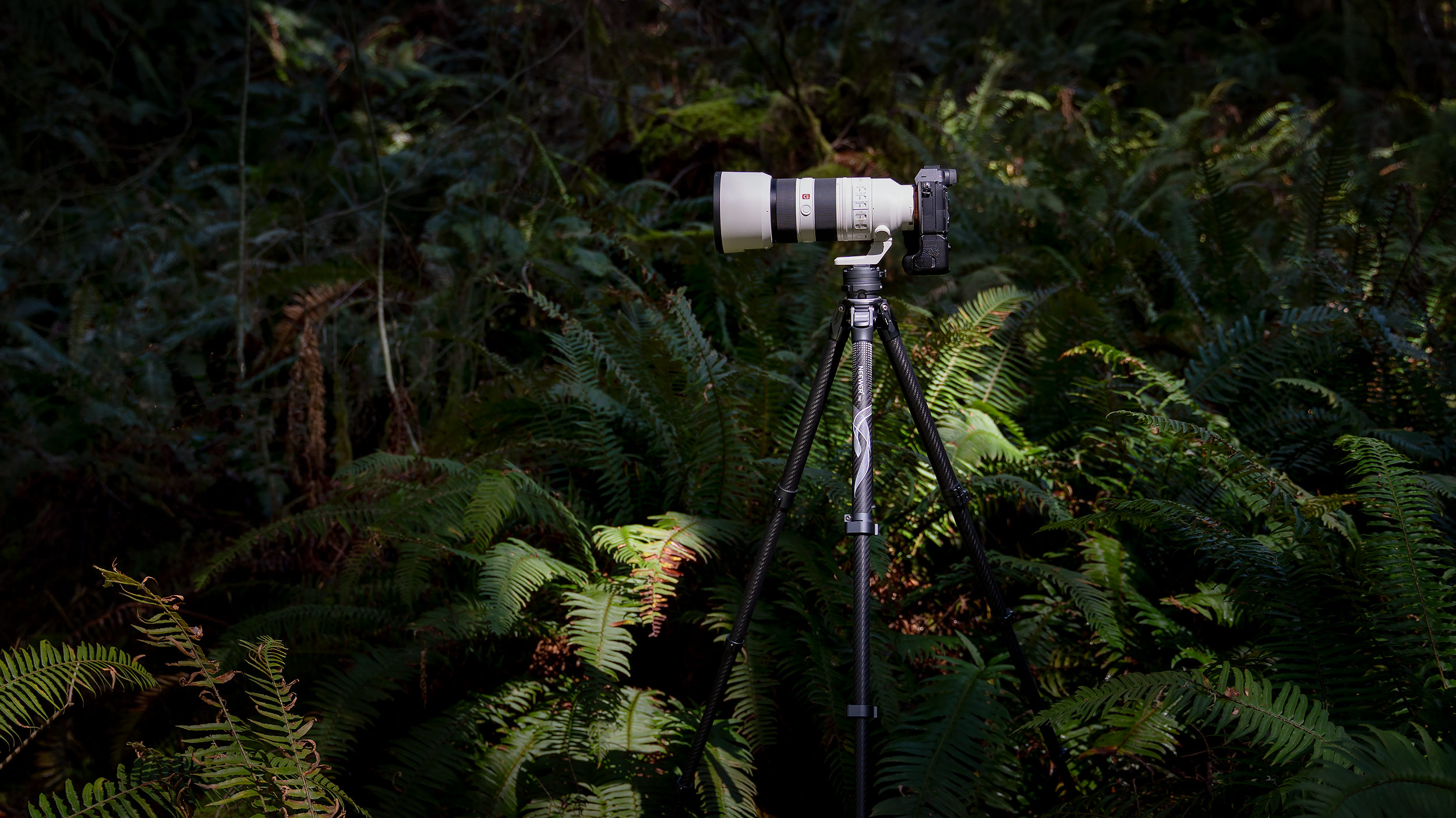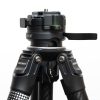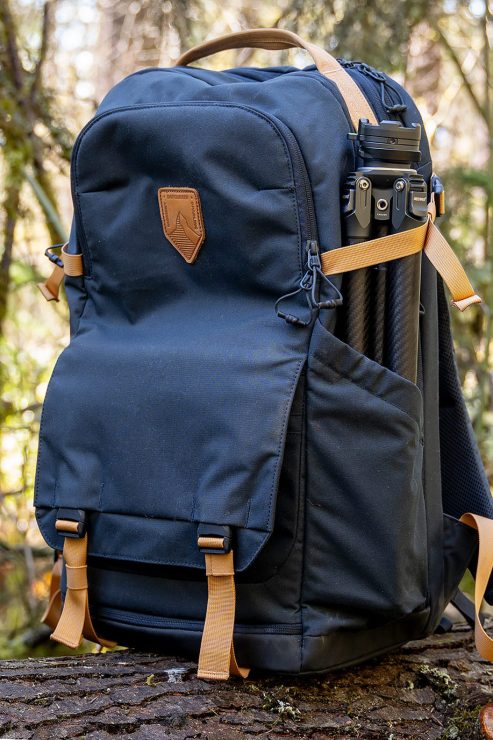
We all know that a good tripod can help us get the most out of our expensive cameras and significantly improve our landscape photographs (and lots of others as well), and yet we often find ourselves out in the world without one for the simple reason that they tend to be heavy and bulky, or if they’re not, they’re too small or flimsy to be helpful. Carbon fiber tripods solve some of these problems, but they can be extravagantly priced. Peak Design’s wildly popular Travel Tripod (hereafter, PDTT), for example, costs $600.
Enter the Neewer LITETRIP LT32: a similarly sized tripod with similar features, but a dramatically lower price tag. The Neewer LT32 costs only about $154.99 (currently with further discounts and a $20 off coupon on Amazon), which means that the Neewer costs about 70% less than the Peak Design.
But is it as good (or close enough)? Let’s take a look at the features and build quality and come to a conclusion.
The Neewer LITETRIP LT32 Size and Weight
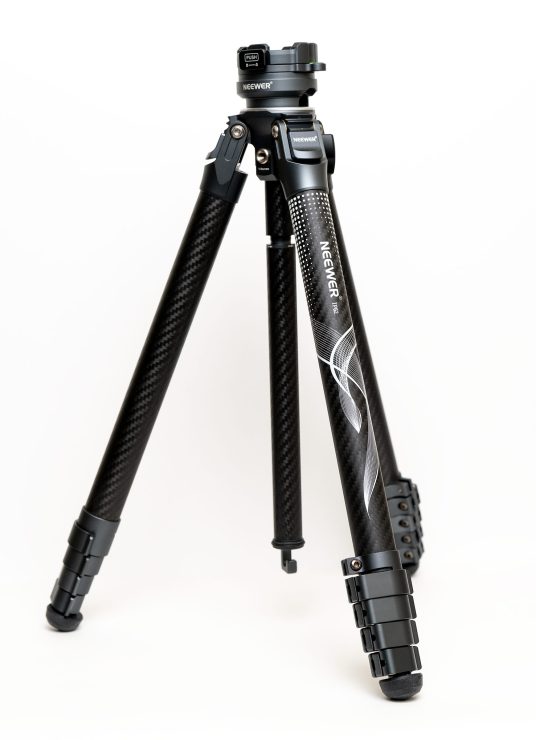
Let’s start off with the basics: when collapsed, the Neewer LT32 is about 16.25 inches long, without the rubber feet attached1 Domed rubber or metal spiked feet can be installed, and are different lengths, but the rubber feet add about a half inch, 2.6 inches in diameter (though it’s 2.7 inches wide from leg to leg), and weighs exactly 2.5lbs with the full center column but again, no feet2 Add 1.3oz for the metal spikes, 1.8 ounces for the standard rubber. With your choice of feet, this is right in line with the weight of a carbon fiber Peak Design Travel Tripod (2.8lbs), and about one inch longer (15.4 inches) and half inch wider (3.1 inches).
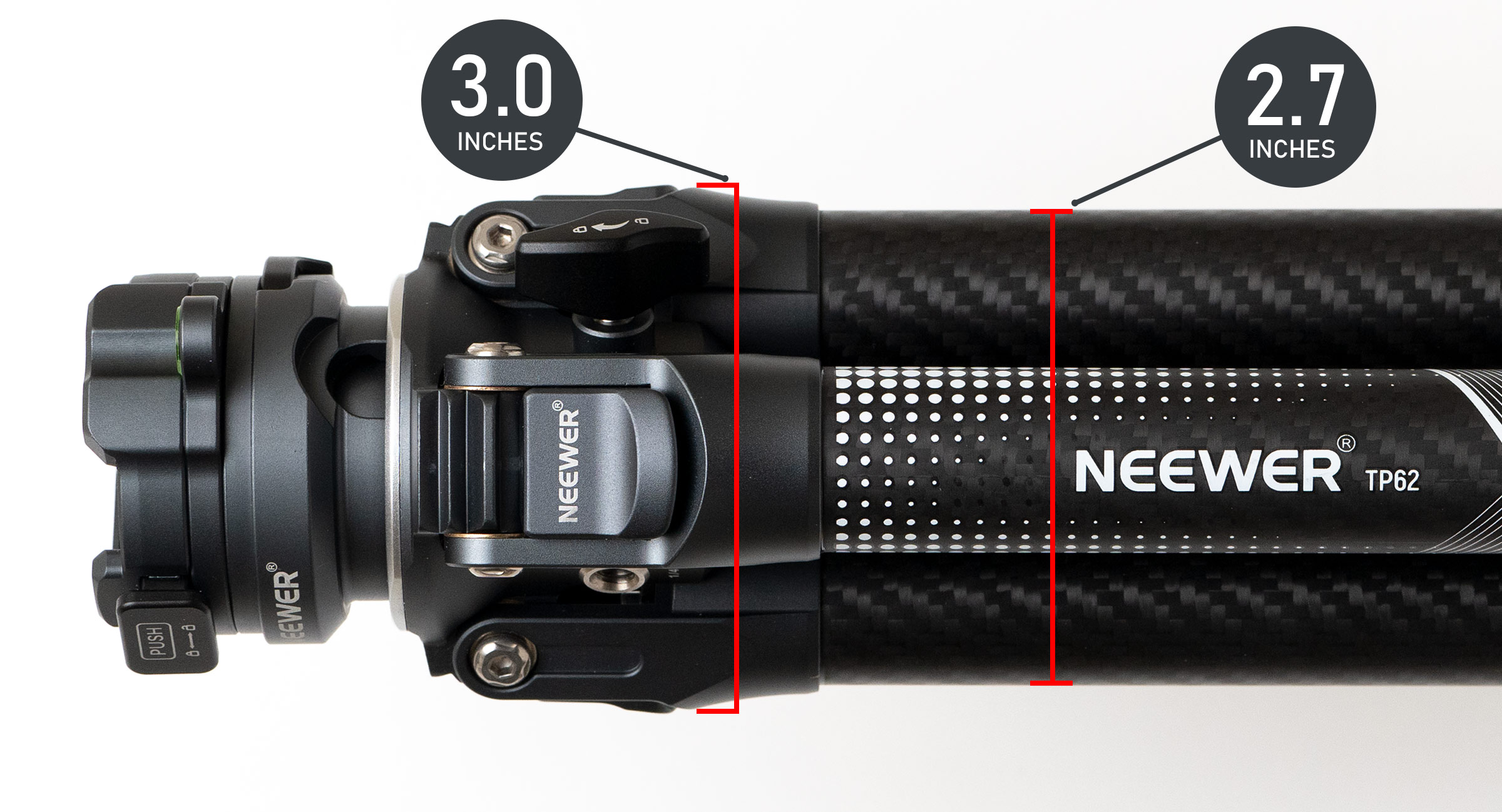
When extended, the Neewer reaches a height of 52 inches without the center column extended (which is how all tripods should be used when the most stability is required), and 61.75 inches with the center column raised (my measurements, with rubber feet). Again, for practical purposes this is virtually identical to the PDTT’s measurements of 51.25 and 60 inches, respectively3These are the numbers provided by Peak Design.
All in all, the Neewer compares very favorably to the Peak Design: they’re the same weight, and although the Neewer is slightly longer, it makes up for it with a slightly slimmer form overall and better extended height.
Features: The Head
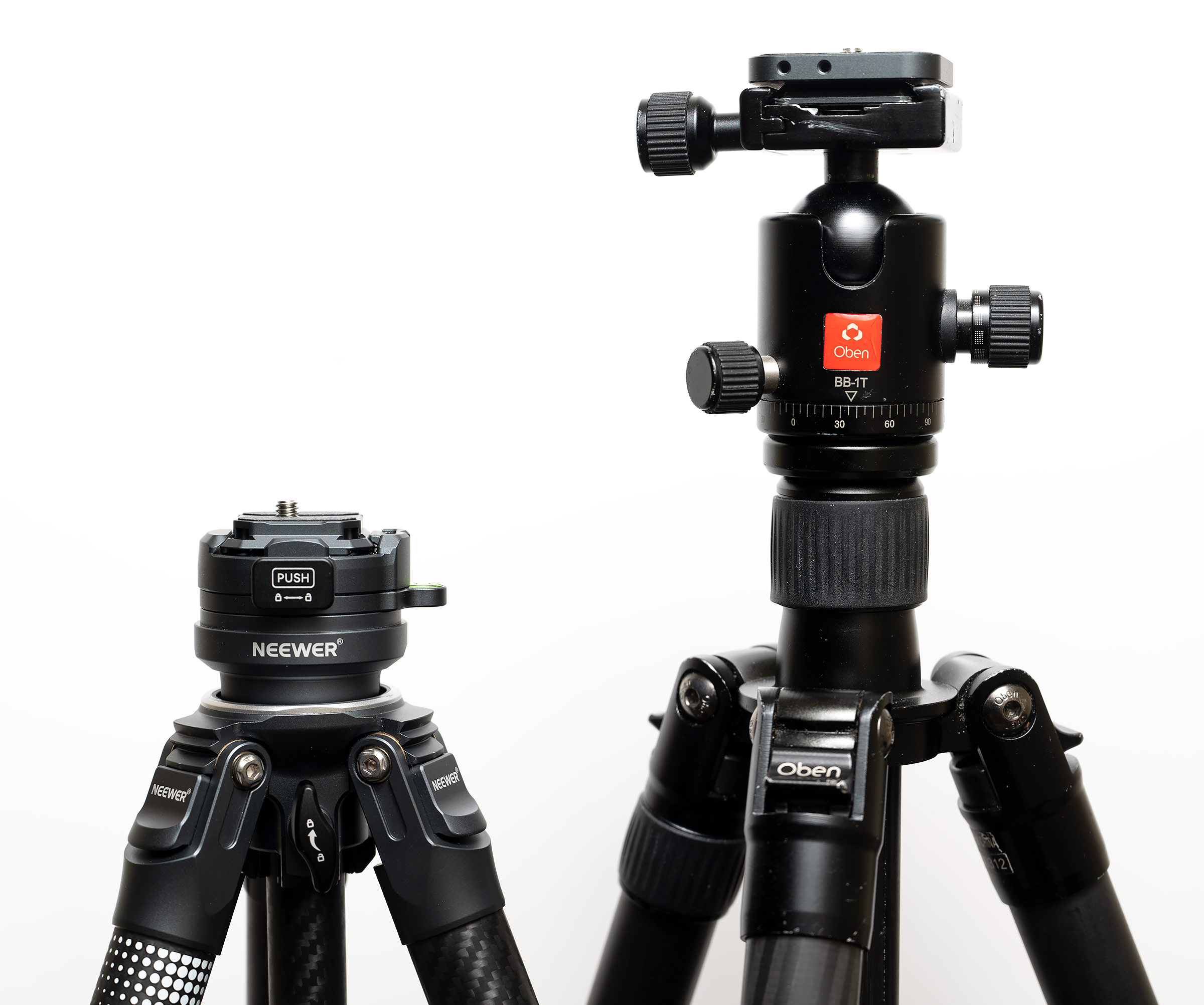
Neewer has used a low-profile head to keep the tripod as compact as possible, using the collar of the tripod as the socket of the ball-head in the same way that Peak Design does. Similarly, the head design uses a single lever to lock all directions of movement, which is quick and efficient, and frankly, the lever is easier to actuate than the twist-ring on the PDTT that does the same job. The downside of both heads, of course, is that you don’t get adjustable drag or separate horizontal panning locks.
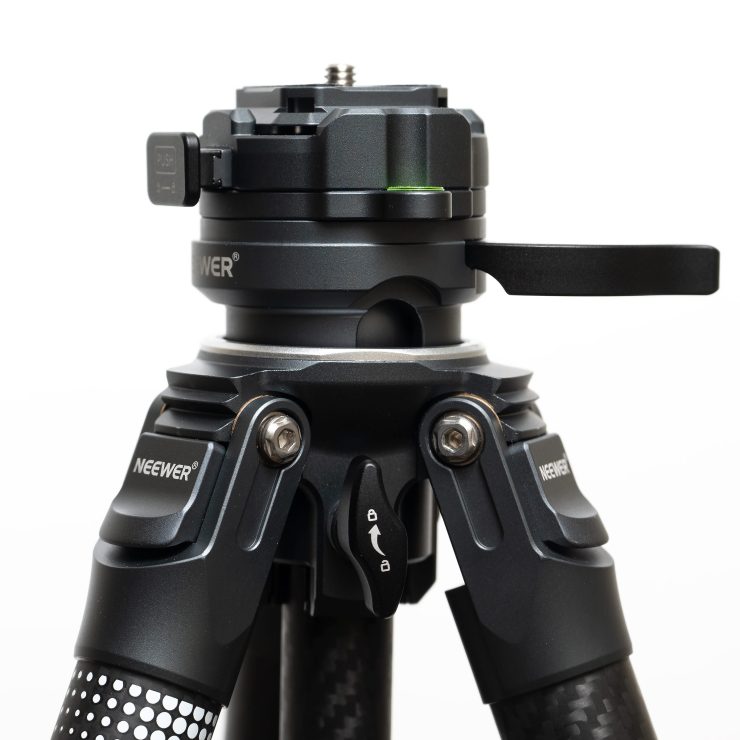
However, if you want to use the tripod for shooting video and want panning capabilities, the Neewer ships with a second center column that accepts any standard tripod head, so you can use whatever suits your needs and still have really lightweight legs.
For the camera plate, the Neewer uses a quick-release mechanism and a compact, square plate (so there is no “front” that needs to face forward4If you’re using your camera in “portrait” mode, the slots that allow that range of movement are only one two sides, so there will be a front and back in such cases) that is Arca-Swiss compatible and also cross-compatible with the Peak Design. However, it should be noted that the Neewer head only accepts square plates: its design locks on all four sides, so it can’t accept wider plates or L-brackets. The quick-release button can slide to the left to lock it in place and reduce the risk of accidental release.
Like most ball heads, the Neewer’s head has a bubble level to aid in leveling your camera.
Features: The Legs
I’ve always been a fan of flip-locks on tripod legs rather than twist locks: they’re easier to use, and they provide immediate visual confirmation of whether your legs are locked or not… I don’t know how many times I’ve set up a tripod with twist locks and discovered after a few moments that one leg section wasn’t locked as the tripod sagged to that side. Good flip-locks solve that problem.
And Neewer’s locks are good. Rather than being made of plastic (like my beloved old Slik U212’s, which broke after years of use), they’re made of aluminum, and thus, are compact and lightweight.
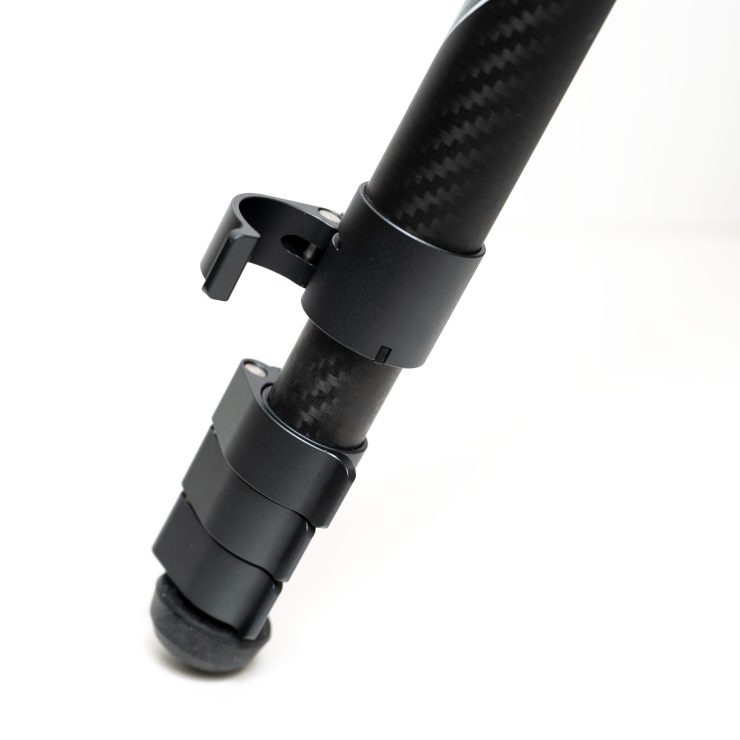
As mentioned above, the legs are threaded to accept either rubber feet or metal spikes. Whichever you choose to use, you’ll have to store the set in your camera bag or tripod bag, which seems like a recipe for either not having them when you need them, or losing the second set of feet entirely. Not my favorite part of this tripod.
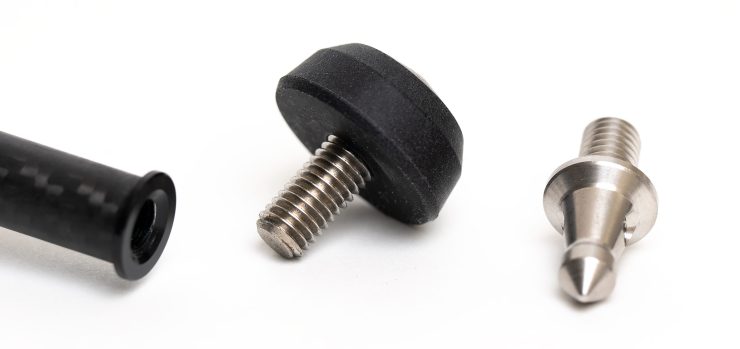
At the top of each leg is the position lock, and each leg can be locked into one of three angles. These are fairly standard and work well.
Shooting at Ground Level
One of the great things about this style of tripod is the ability to shoot near ground level without having to flip the camera upside down (also an option).
Simply remove the center column extension tube by unscrewing it5In fact, there is a secondary way to lock the extension tube into place. This involves flipping the ball head to the side to access a hex head screw cap, removing the hook from the bottom of the extension tube to access a hidden hex wrench, and using the wrench to loosen or tighten the threaded rod that internally connects the extension tube. I can’t see any reason that a reasonable person would use this: the main screw connection between the two tubes is plenty strong and would take several turns to “accidentally” unscrew., and spread the legs to their widest position, and the camera base is about 6 inches off of the ground. This is very useful for macro work or shooting with ultra-wide angle lenses.
User Testing: How Well Does it Actually Work?
I started off testing the Neewer LT32 tripod around the studio, and was really impressed. Build quality felt very high quality: no play in the joints, no flimsy pieces, everything worked as expected.
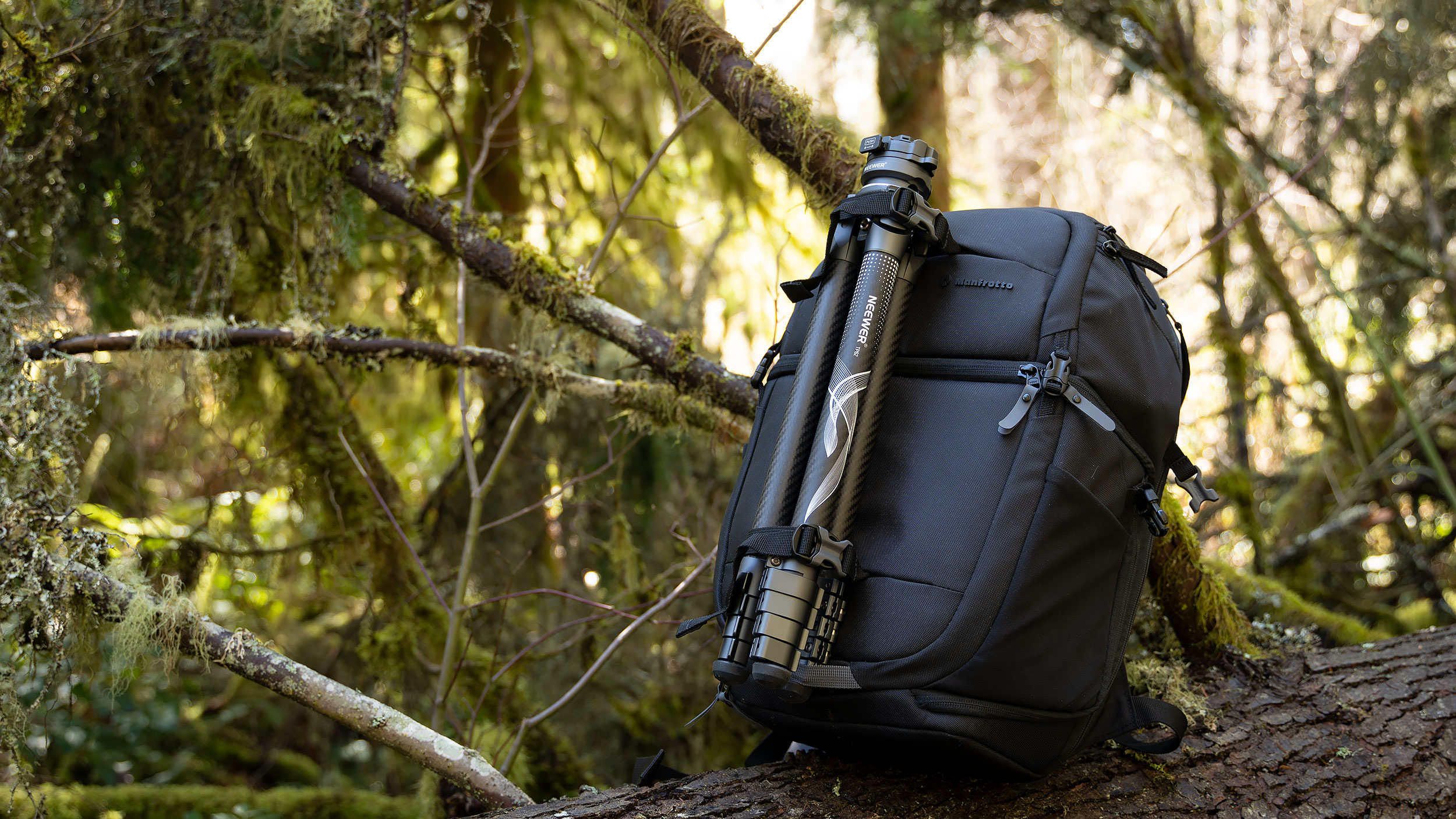
So, with a solid familiarity with the tripod and its features, I decided to head out into the woods to see what I could find (which was not much, in the end). The tripod is light enough that carrying it was a non-issue; it felt like just another lens in my backpack. In fact, it’s lighter than my 70-200mm f/2.8.
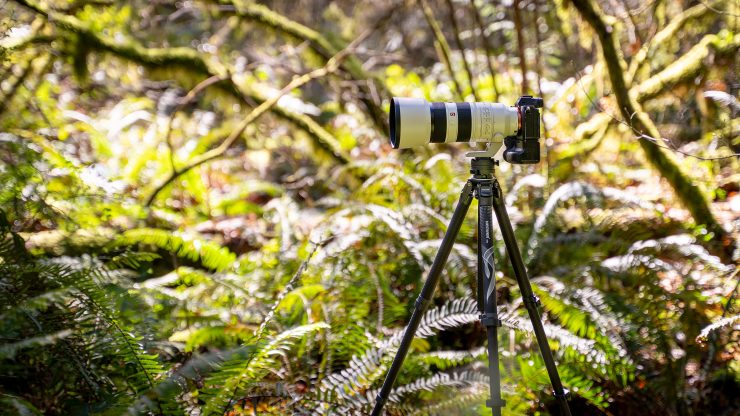
But of course, I also carried the 70-200mm and used the tripod with it attached to my Sony A7RIII with the loaded battery grip, just to see if there would be any stability concerns with that much weight, and there were no problems at all. I’ve also thrown the old Sigma 150-600mm lens on there, and again, perfectly steady, though I might have some concerns about vibrations if the wind were to pick up. The official weight limit for the tripod is 22lbs.
With the flip locks on the legs, the quick release plate, and the single locking lever on the ball head, set up and adjustments of the tripod were remarkably quick and painless.
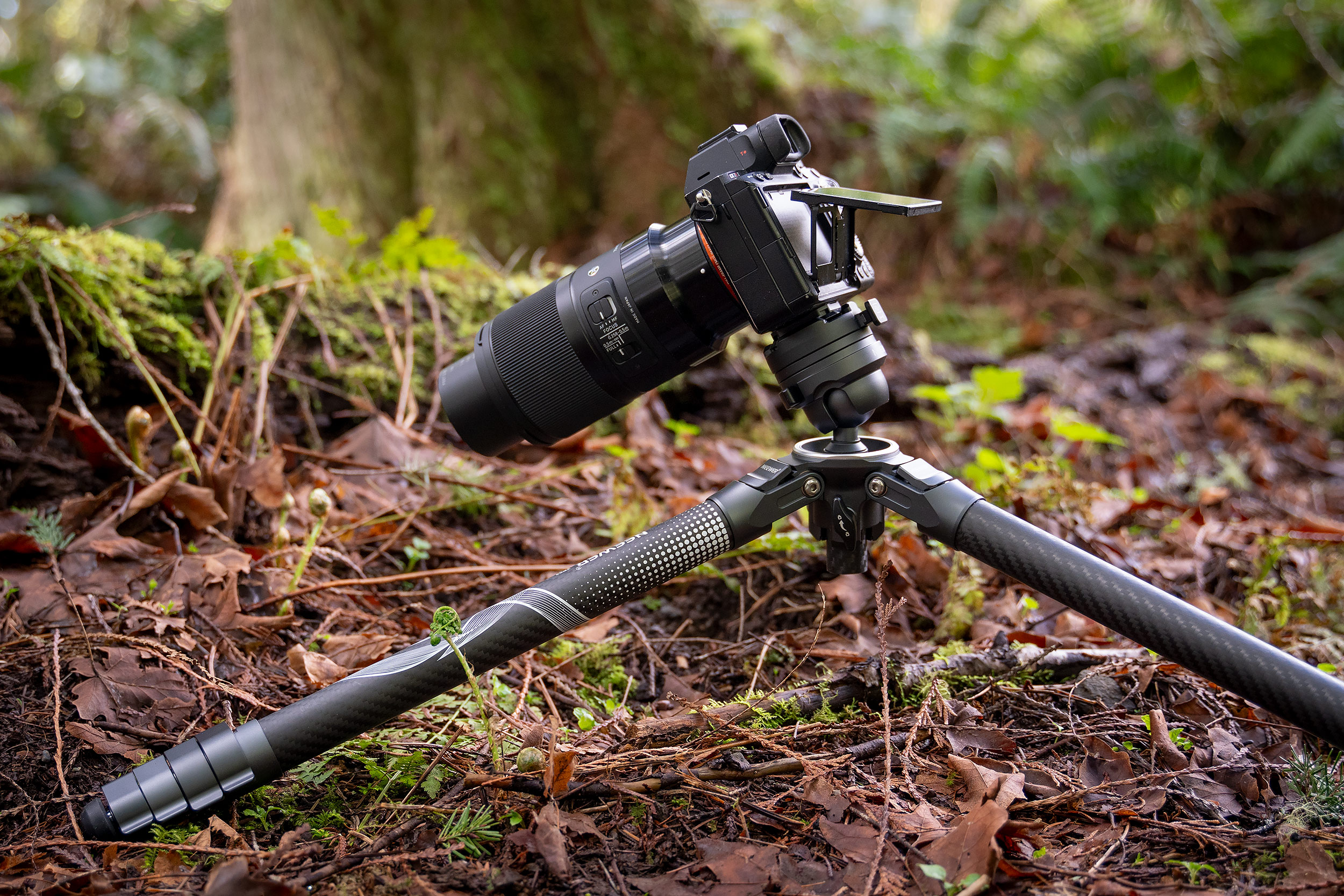
On this hike, I brought along a Sigma 70mm f/2.8 Macro lens as well, and I was very happy with how well the tripod was able to collapse to shoot near ground level… it was simply a matter of unscrewing the center column. It is also possible to get even lower by flipping the center column upside down so that the ball head is between the tripod legs, but I didn’t find it to be necessary. For macro shooting, the tripod was very steady.

Though I’ll be continuing to shoot with the Neewer tripod over the next few months as the weather gets warm, I’m very happy with the tripod’s performance so far.
Problems and Concerns
I’ve mentioned a couple of concerns that I have with the design of this tripod already, though they’ve been fairly minor issues. First, I’m not crazy about the design of the interchangeable feet; I’d prefer the retractable spikes that used to be the standard. I’m much more likely to lose or leave behind something that has be to carried separately.
I’m a fan of the quick release system for the tripod plate, but it does rule out the use of L-brackets or camera cages.
A very minor issue: I’m not crazy about the white graphics and branding on the tripod’s leg. It’s not terrible, but I’d generally prefer something more simple and under-stated on my camera equipment.
Finally, a more serious issue. When I first got my early-model LT32 (earlier versions were called the TP62) and was testing it, I was screwing on the extension tube of the center column, when the glue holding the end-cap in place suddenly broke free, and the center column was no longer usable.
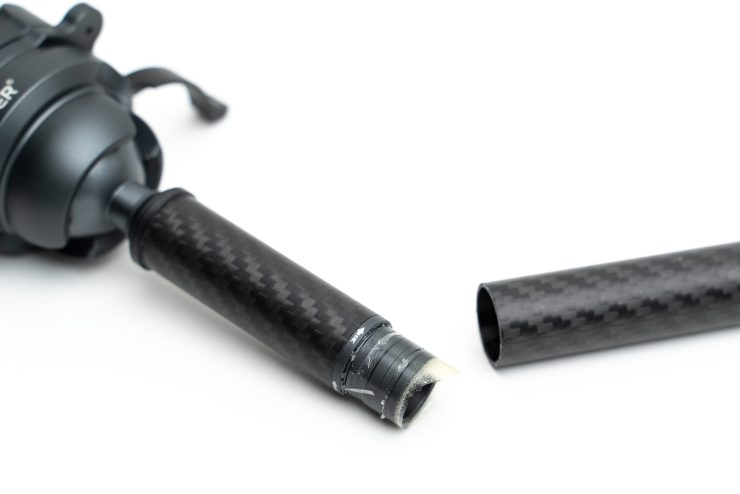
Neewer quickly sent me a new one, explaining that the production tripod had already been updated to use better glues, and when it arrived, the second tripod came in a slightly different box, and of course, I immediately tried to break the glue joint again… but no luck. It held that time and every time that I’ve cranked it down afterward. So, assuming that you get the current production model, this should not be a problem.
Conclusion and Ratings
Over the past three decades, I’ve owned more tripods than I can count, and I’m a little surprised to say that this Neewer LT32 is among the best, for its size. The size and weight are excellent, and its ease of use, flexibility and stability while shooting are also very strong. I’m impressed with the strong, lightweight aluminum flip-locks on the legs, and the center-column design makes ground-level shooting nice and easy. If you frequently switch between rubber feet and spiked feet, this tripod may be annoying; I’ll probably just leave the rubber feet on full-time. All in all, I can give this tripod a very strong recommendation, knowing that it’s going to get quite a bit more use in my personal kit.
The Neewer LITETRIP LT32 is available at Amazon and B&H Photo.
This tripod was provided to me free for review, but I was not paid, I’m not a Neewer affiliate, and will not receive any compensation from Neewer. All opinions are my own, and I’ve had no input or oversight from Neewer. Links to Amazon, B&H, Moment, and Peak Design are affiliate links.
